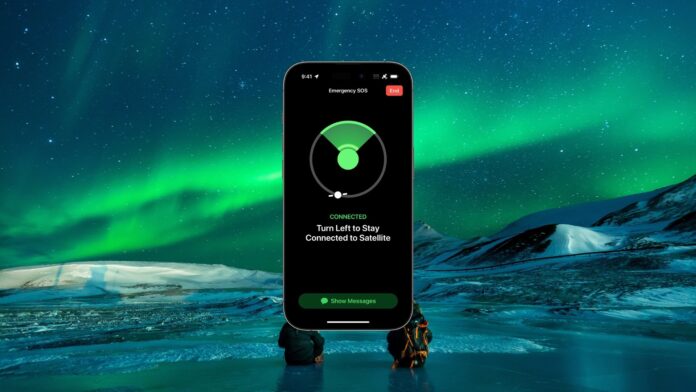A stranded man in Alaska was rescued after using Apple’s new Emergency SOS satellite feature to contact emergency services.
According to Alaska State Troopers(Opens in a new window) on Dec. 1, at 2 a.m. (AST), rescue services were notified that an adult male traveling via snowmachine from the remote town of Noorvik to Kotzebue had activated an Emergency SOS via satellite on his iPhone after becoming stranded. The area did not have Wi-Fi or cellular coverage.
The Apple Emergency Response Center provided Troopers and the Northwest Arctic Borough Search and Rescue Coordinator with the GPS coordinates of the stranded man, and four volunteer searchers located and transported him to Kotzebue. No injuries were reported.
A spokesperson for the Alaska Department of Public Safety told(Opens in a new window) Insider that search and rescue teams were dispatched at 3:30 a.m. and the stranded man was taken to Kotzebue at 6 a.m. According to Insider, the man did not have another form of satellite communication and was wearing “appropriate clothing” and had “fire-starting supplies.”
In a public statement, Troopers who saved the man said they “were thoroughly impressed with the accuracy and completeness of information included in the initial alert.”
The news comes just weeks after Apple announced(Opens in a new window) the launch of the Emergency SOS satellite feature for iPhone 14 users in the US (except Guam or American Samoa) and Canada. The safety service allows users to message emergency services outside of cellular and Wi-Fi coverage.
The feature also enables iPhone 14 owners to share their location via satellite with friends and family using the Find My app. Owners of every model in the iPhone 14 lineup can use the feature. It’s due to roll out to certain European markets including the UK, Germany, France, and Ireland sometime this month.
Recommended by Our Editors
The satellite connection can be maintained even if your phone screen is locked but it might suffer when around hills, mountains, canyons, and tall structures or even when around dense foliage. Apple notes(Opens in a new window) that a message sent using the satellite feature can take 15 seconds to send in ideal conditions with a direct view of the sky, and over a minute to send under trees with light or medium foliage.
Latitude can also affect the connection. Apple has said that being in places above 62 degrees latitude can make it harder for the feature to work. This can be taken with a grain of salt however as Noorvik and Kotzebue are close to 69 degrees latitude.
Apple has said that Emergency SOS is free for two years after the activation of iPhone 14 or iPhone 14 Pro but has not stated what it will cost after that. You can test the Satellite feature without alerting rescue services through the settings menu on your iPhone 14.
Like What You’re Reading?
Sign up for Fully Mobilized newsletter to get our top mobile tech stories delivered right to your inbox.
This newsletter may contain advertising, deals, or affiliate links. Subscribing to a newsletter indicates your consent to our Terms of Use and Privacy Policy. You may unsubscribe from the newsletters at any time.
Hits: 0
















